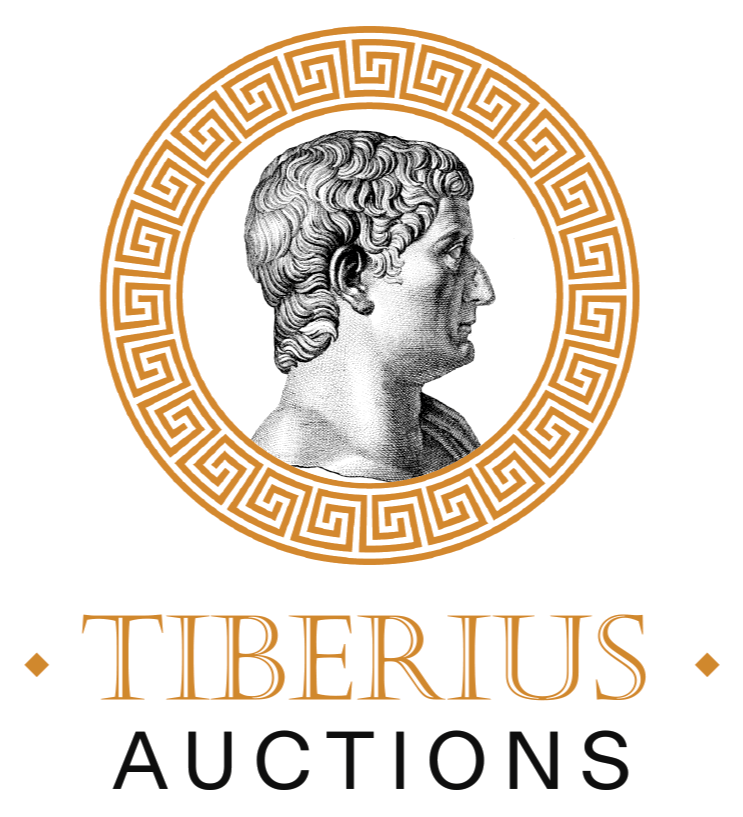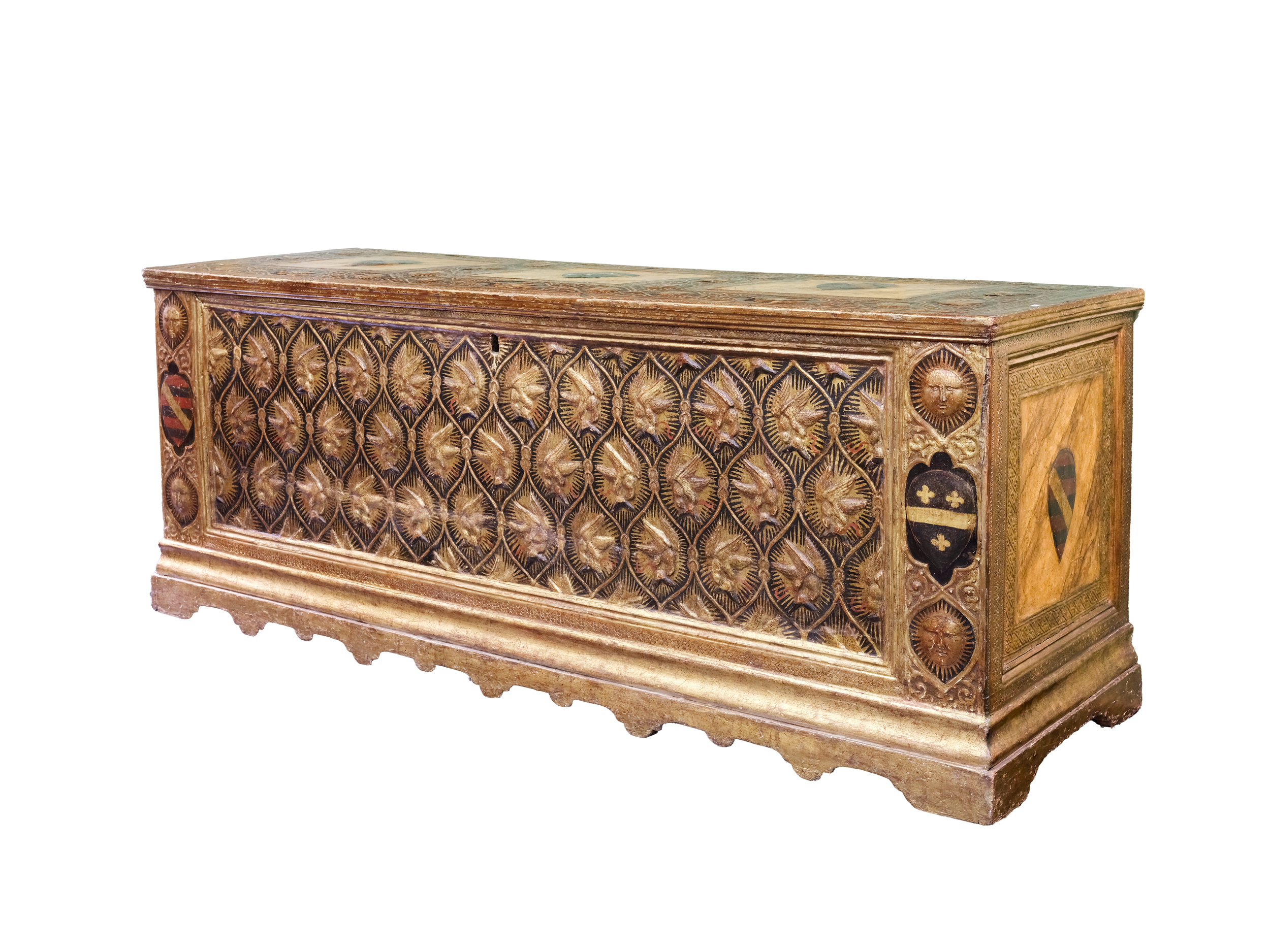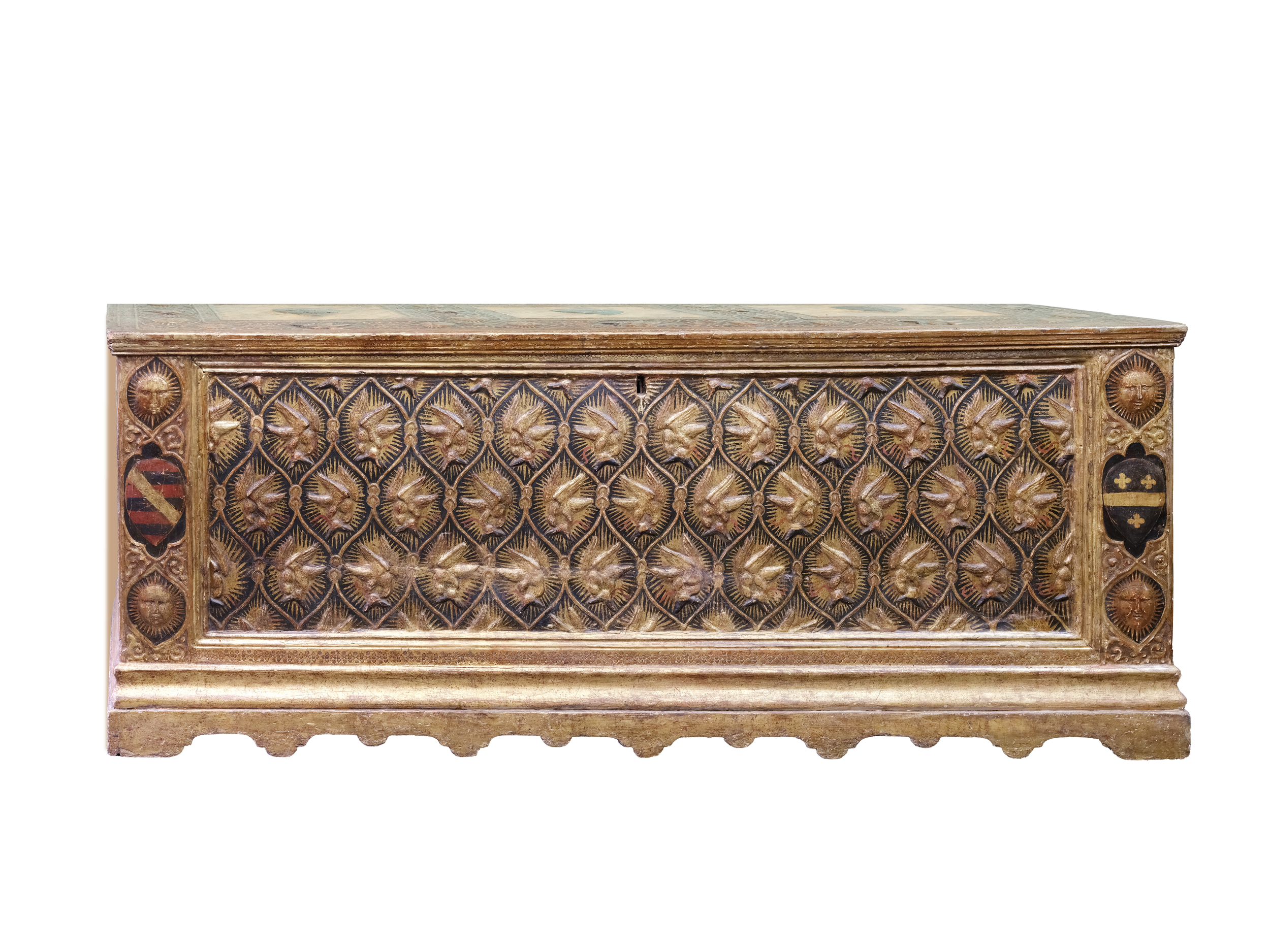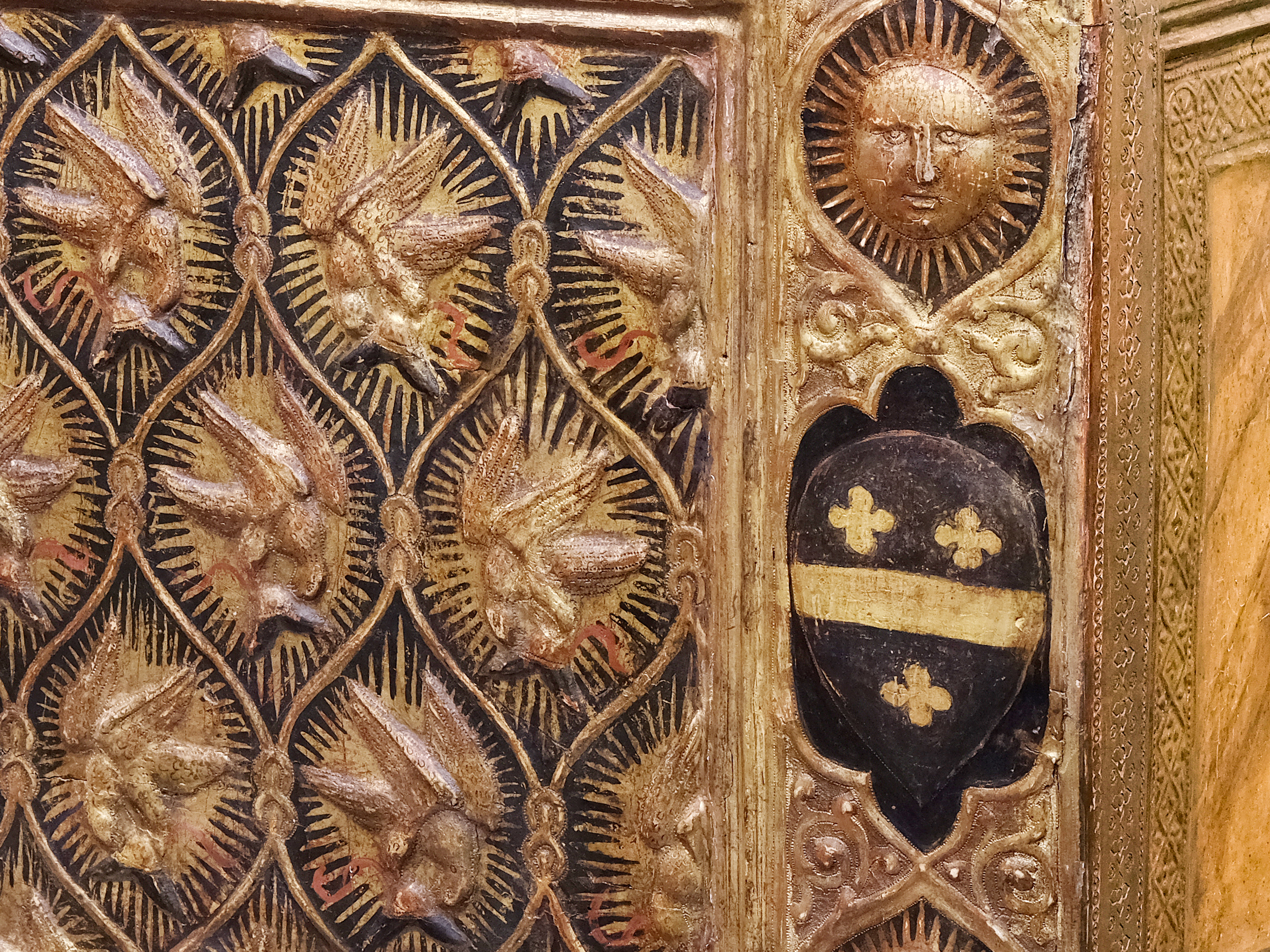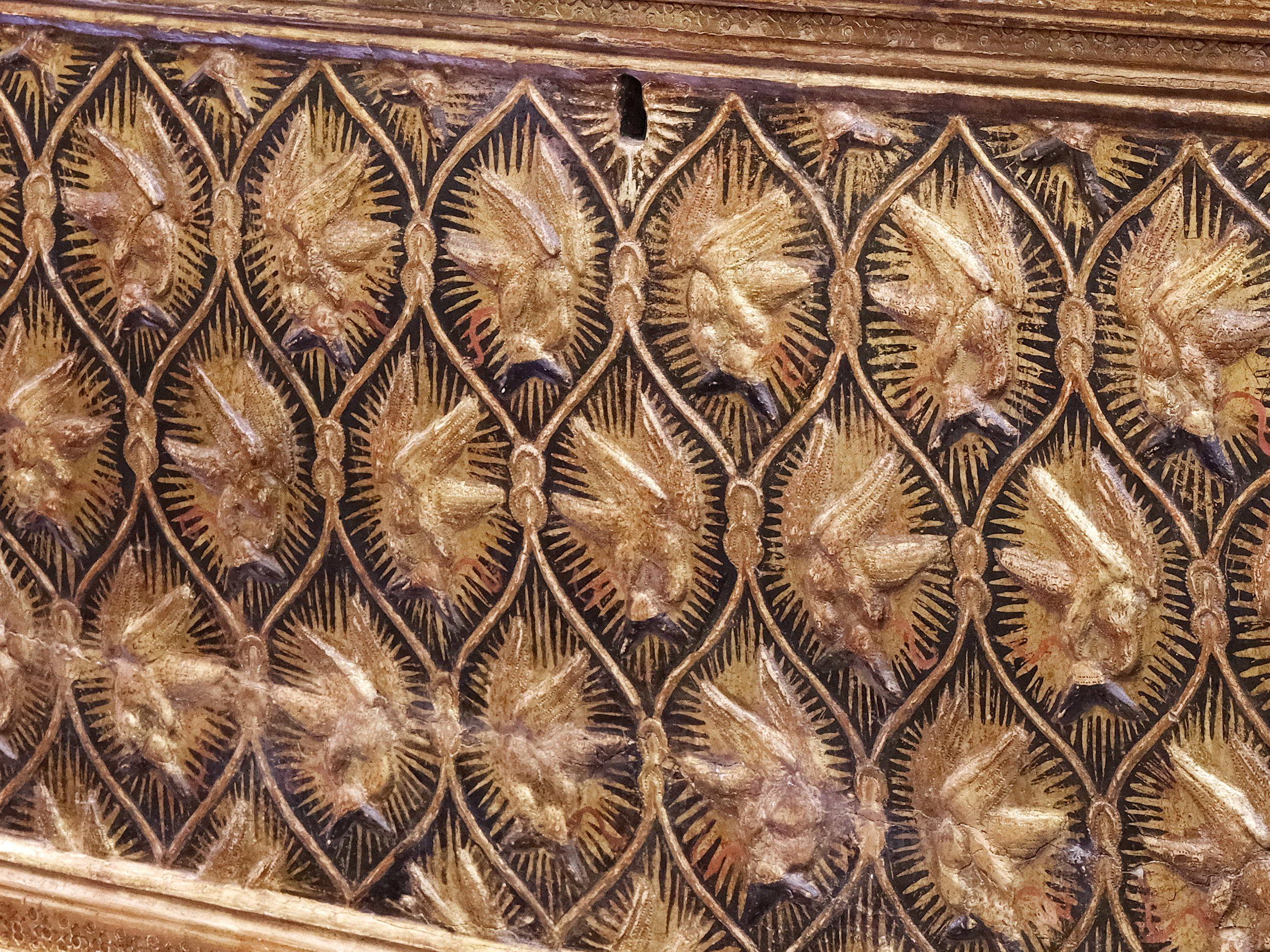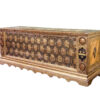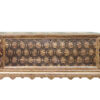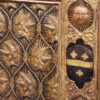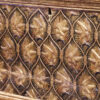Museal Renaissance wedding chest
17th Tiberius Auction
Museal Renaissance wedding chest
Starting price: € 12.000
Estimated price: € 15.000 / 25.000
Museal Renaissance wedding chest
“Cassone a pastiglia dorata con uccelli”
Florence (Tuscany)
1440-50
Softwood body
Decorations in gesso pastiglia
Length 178 cm, height 73 cm, depth 62 cm
The museum wedding chest from the Renaissance is called a “cassone”, which refers to large decorated chests from 14th to 16th century Italy that contained valuables such as luxurious fabrics. This chest was probably commissioned by the groom and given as a gift to his future wife. From the 15th century onwards, there were even special workshops that only produced cassoni, with these elaborate chests gradually replacing painted chests made of ivory or leather and attracting the interest of the European elite in particular.
The front, sides and lid of this extraordinary chest are decorated in pastiglia with eagles, suns and heraldic cartouches in relief. The latter probably refer to the coming together of the two families, who were united by marriage. The pastiglia technique (“pastille” or “slip” in Italian) is a bas-relief decoration that has been used for cassoni since the 14th century in particular. These raised decorations were modeled on the wooden base using a mold in gesso (white mixture for priming) and then polychromed or gilded by hand. This magnificent example shows ornamental decoration with birds inscribed in a geometric diamond pattern, which could be magnificent eagles in flight. The serial decoration is probably derived from fabric patterns.
An earlier comparative example with a similar geometric lattice façade can be found in the Metropolitan Museum of Art from around 1425-50 (inv. no. 1975.1.1938). The front has a very similar structure, but is almost completely gilded. In the masterful example presented here, the dark background also suggests spatial depth, which accentuates the gilded depictions of birds in the radiating nimbuses.
